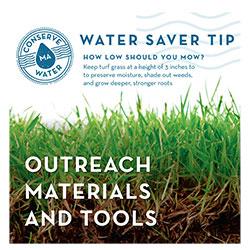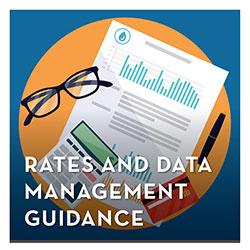Data management refers to making sure you have at your disposal the information you need to:
- Understand how your customers are using water, how those patterns impact your revenue, and what’s changing over time
- Develop sound budgets and rate structures that address your system’s individual needs
- Justify proposed decisions to elected officials, water commissioners, and rate-payers
- Plan for the future
Guides:
The following guide provides best management practices for tracking and analyzing customer use and billing data to support financial planning and rate setting.
The following guide outlines useful metrics of customer use patterns to support financial planning and conservation.
| You are here | Best Practices for Water Pricing |
|---|---|
Resources
-
What are the experiences of Massachusetts suppliers with rate setting?
- What are the important lessons learned about rate setting from MA water suppliers?
- What Detailed Guidance is Available on Water Rate Setting?
- The American Water Works Association’s Principles of Water Rates, Fees, and Charges (AWWA M1, most recent edition)
- The American Water Works Association’s Developing Rates for Small Systems (AWWA M54, most recent edition)
- Building Better Water Rates for an Uncertain World: Balancing Revenue Management, Resource Efficiency, and Fiscal Sustainability. Alliance for Water Efficiency (2014).
- Water Conservation-Oriented Rates: Strategies to Extend Supply, Promote Equity, and Meet Minimum Flow Levels. Wang et al., American Water Works Association (2005).
- U.S. EPA Water and Wastewater Pricing Resources (manuals, tools, publications, case studies).
- What Rate-Setting Tools are Available to Help me with Rate Setting?
More content for Water Suppliers and Municipal Officials:
Toolkit - Site Map > Municipalities > Suppliers and Water Commissioners









